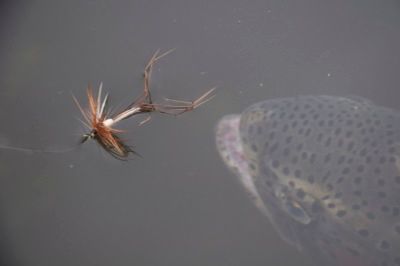
If the excitement of the dry fly season seems to be waning as we reach September and early autumn, there is still one very good reason to get excited. With a long body, big wings and gangling, clumsy legs, the crane fly (better known as the daddy long-legs) is a fly to excite both trout and anglers.
Just about any water bordered by lush fields will contain these beasts, which proliferate in the late summer and autumn. Not only are they hard to miss, they are also –if you’ll forgive the turn of phrase- completely crap at flying. Any keen wind is liable to send them blundering across the water, where they do an even worse job of swimming.
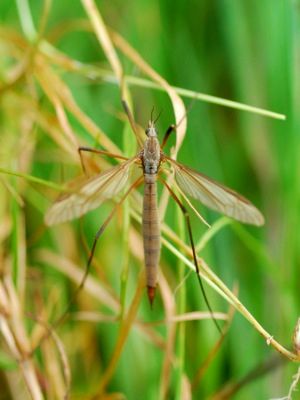
Unsurprisingly, they draw full-blooded takes and fishing the daddy long-legs fly is not so much a game of finesse, but a more visceral experience for the fly fisher. We produce a whole host of effective daddy longlegs fly patterns at Turrall: our foam bodied classic daddy is one of our best selling flies of all time, while detached-bodied, CDC and even sinking daddy long-legs are all popular choices.

However, for our fly of the month in September, we are going to look at the muddler or Muddle-Headed Daddy Longlegs. Why? Because when the fish are really hammering the natural flies, or need a bit of extra provocation this is a superb pattern to try.

A muddler style head of deer hair is the key with this pattern; not only does this make a nice commotion when twitched, it also renders the fly very buoyant so you can move it with little risk of the fly sinking.
Fishing the Daddy Longlegs
Before we look at a step by step tying guide, we’ll quickly look at a few fly fishing tips:
-A breezy day is best for trying daddies, on rivers or lakes. Pick an grassy bank or meadow where the wind is blowing out onto the water.
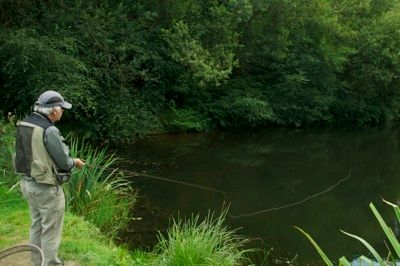
-On small stillwaters, the daddy will also work around cover, flicked under branches.
-For tackle, don’t go too light with leaders. You could step down to a four or five weight rod, but very fine tippets can get twisted or kinked by these meaty flies. We’d recommend starting with 5lb tippet.
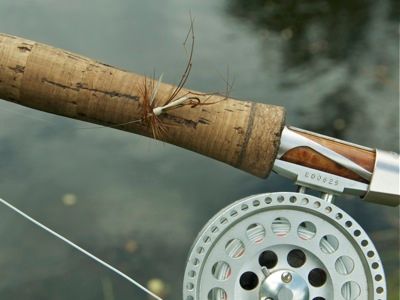
-Don’t just cast out and wait. By all means use any natural drift, but try recasting regularly and twitching too (especially good with our fly of the month!).
-Takes can be violent, but don’t strike too early or too hard. Let the fish engulf your fly properly, before giving a measured lift.
-Finally, don’t think of the daddy as purely a trout fly. It can be excellent for chub, while carp will also sometimes take one fished static.
Tying the Muddler or Muddle-Headed Daddy: A Step by Step Guide
Hook: Mayfly, size 10
Thread: Brown
Body: cream or off white floss or thread
Legs: Turrall daddy legs
Head: Deer hair, tied muddler style
Step 1: Begin by running the fine cream floss onto the hook, a little distance from the hook eye, to leave space for the legs and head.
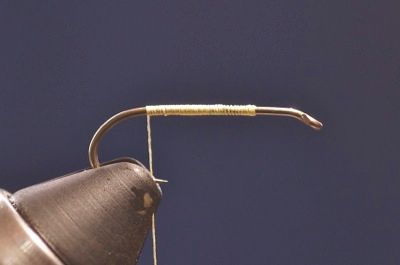
Step 2: Build a nice even body. With a little care, you can create a tapered effect as shown.
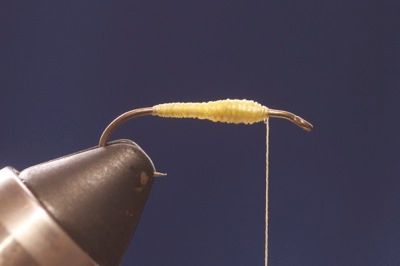
Step 3. Tie off the body material, before running a little base of brown thread just towards the eye as shown.
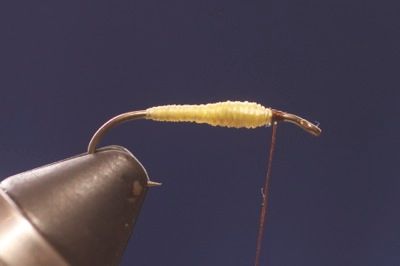
Step 4. It’s time to select our legs. You can knot these yourself, but Turrall also produce ready tied Daddy Legs that save time and fiddle.
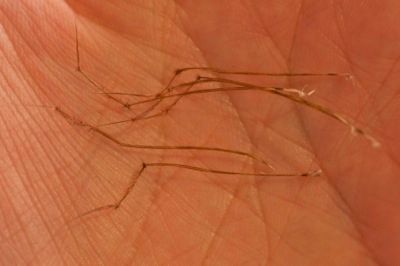
Step 5: The legs are easiest to tie in each side separately. Trap with a couple of turns of thread and splay them out a little.
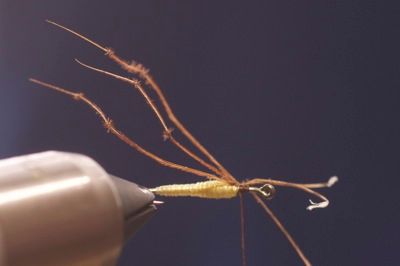
Step 6: Now we can add three legs to the other side, before covering up the stumps with thread.
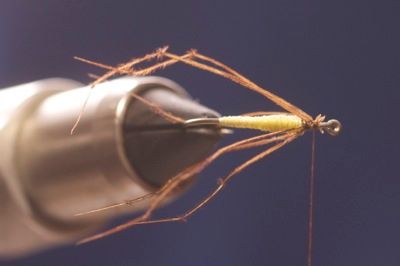
Step 7: Take a good pinch of deer hair for the head (the best part of a pencil’s thickness is ideal). Pinch in place and apply one loose turn of thread.
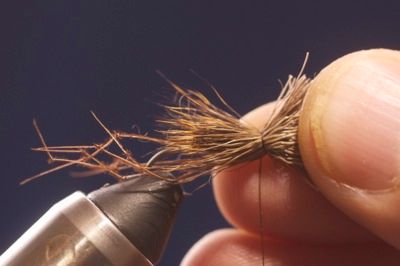
Step 8: Now make another turn and pull steadily, allowing the deer hair to flare out and turn around the hook.
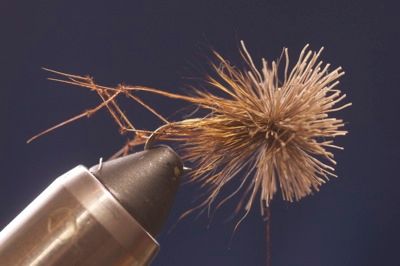
Step 9: Make another tight turn, before sweeping back the hairs and making a few turns of thread at the head, to keep the eye clear.
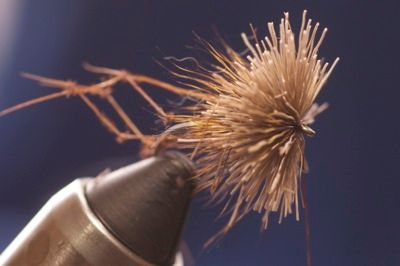
Step 10: Now you can tie off the thread and begin trimming. A really sharp pair of scissors really helps here. I prefer to trim the head fairly tight, but then leave some longer fibres facing backwards, which will add a little more profile and disturbance.

Step 11: The finished fly. Apply some fly floatant straight from the vice, as well as another coat on the bank, and you have a super buoyant fly that can easily be waked or twitched without sinking.

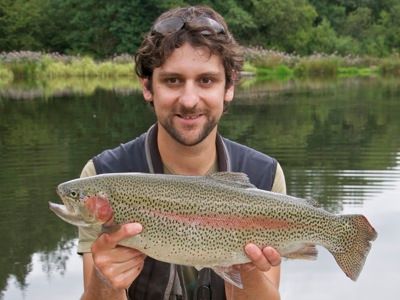
A fine rainbow trout taken on the muddler daddy; this one wanted dinner with a twitch
More Info: For more fly fishing news, patterns, tips and prize giveaways, check out our Facebook page. Meanwhile, we also have new website on the way soon at www.turrall.com .